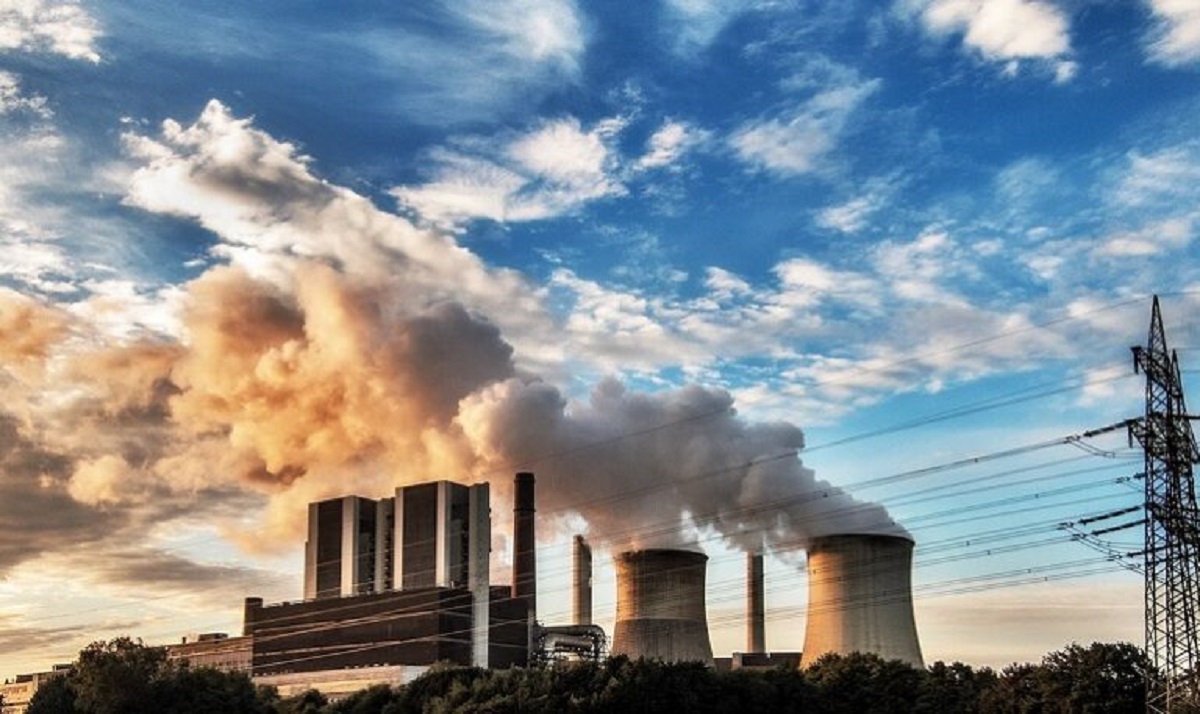Originally published on July 26, 2023, this article has been updated on October 21, 2023 to reflect the latest research and statistics. Our editorial team has ensured you’re viewing the most current data on this topic. Need help or have a question? Email us.
The world has become a very dirty place, and I am astonished by how much the human race has contributed to air pollution, water pollution, light pollution, noise pollution, and more.
The facts on pollution speak for themselves, but it’s vital that we consider what we can do to clean up polluted areas and reclaim the world from the horrors of pollution.
Being curious, I dove into the facts surrounding the spread of pollution. Here’s what I found (prepare yourself for a shock).
Top 10 Most Upsetting Stats
- Each Year More Than One Million Seabirds and 100,000 Mammals Become Pollution Victims
- In Highly Air-Polluted Areas, the Chance of Death by Lung Cancer Is 20% Higher
- Toxic Pollution Has Affected More Than 200 Million People Globally
- According to an Average 2.5 PM Concentration, Chad Is the Most Polluted Country
- The World’s Largest Producer of Carbon Dioxide Is China
- Among the Top 15 Polluted Cities Worldwide, 10 Are in India
- More Than 2 Million People Die Annually Due to Air Pollution
- In US, From a Total of 292.4 Million Tons of Solid Waste, Almost 146.1 Gathered in Landfills
- Almost 80% of the Marine Pollution Is Attributed to Runoffs From Land
- 100s of 1000s of Deaths occur due to Noise Pollution by Increasing Heart Diseases
Pollution Facts
Pollution is a global burden, and it will take the cooperation of the whole world’s population to bring the world back from the brink of destruction.
Here are some shocking facts I discovered regarding pollution.
Toxic Pollution Has Affected More Than 200 Million People Globally
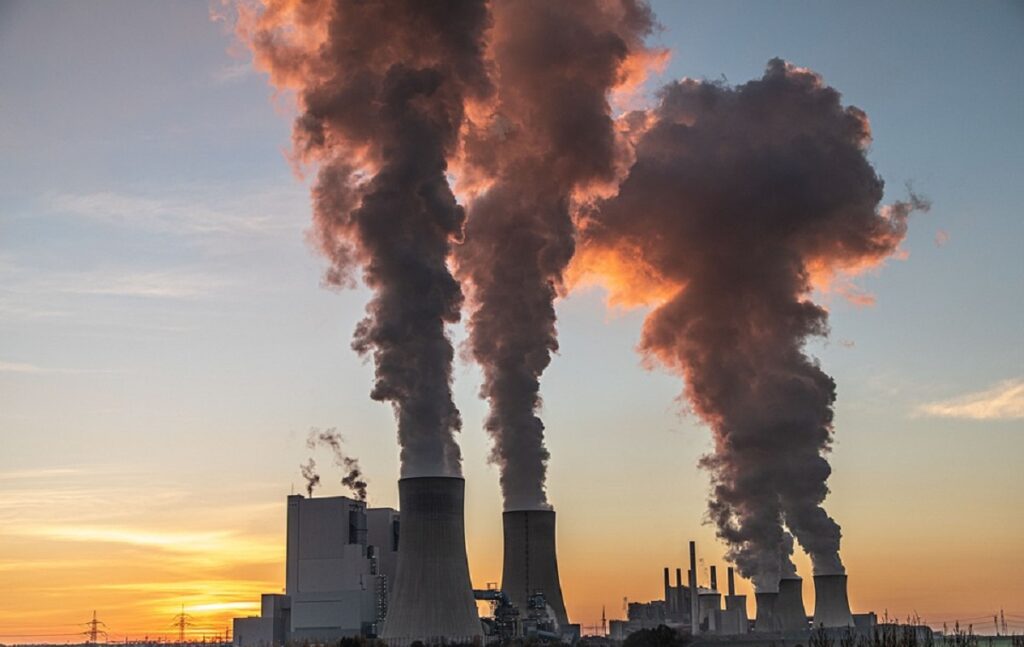
Contaminated sites have contributed to a serious death rate, with one in seven people dying from pollution. More than 200 million people are affected by global pollution, according to Pure Earth.
In Low and Middle-Income Countries, Pollution Is the Leading Cause of Death
In low and middle-income countries, 92% of deaths are related to pollution. With increased economic activity, pollution increases, which I have noted is often the result of foreign companies pillaging natural resources and importing harmful chemicals and materials that are often poorly policed.
Because of this, pollution is one of the leading causes of death in these countries. (World Bank)
According to an Average 2.5 PM Concentration, Chad Is the Most Polluted Country in the World, Followed by Iraq and Pakistan
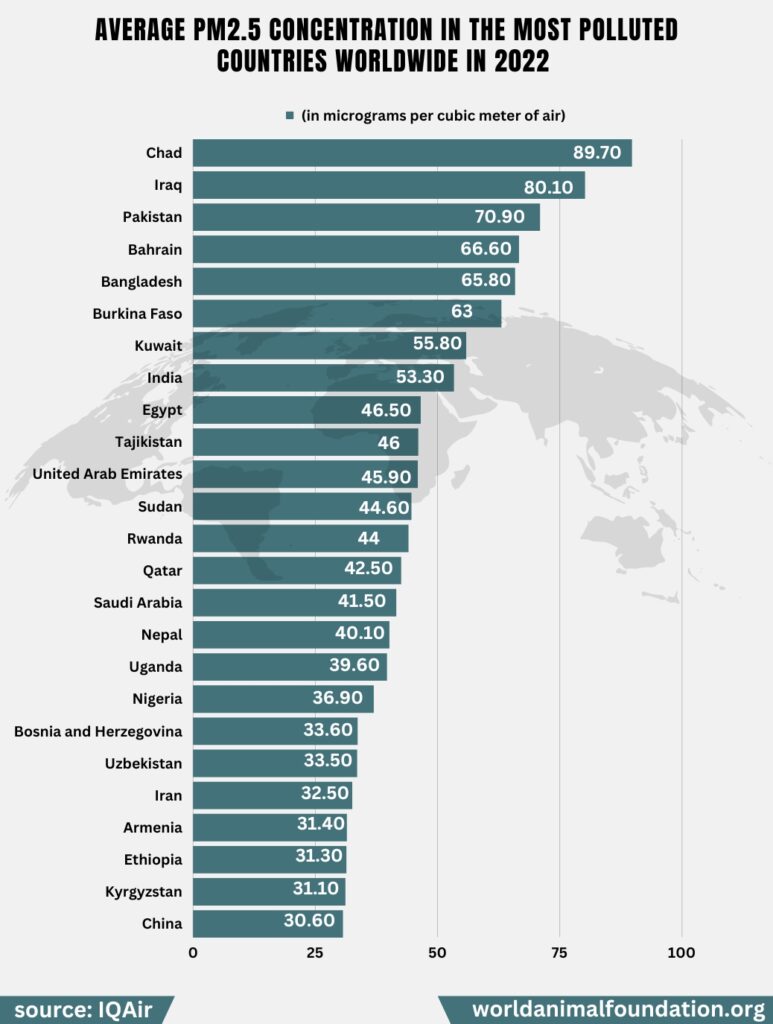
Chad has a shocking 89.7 million micrograms of pollution per cubic meter of air. I am sure this means you can see what you breathe (and probably chew it too!). (IQAir)
The air quality in Chad is 17.9 times higher than the World Health Organization’s air quality regulations.
Meanwhile, Chad isn’t alone at the top since Iraq is a close second for the dubious position as the most polluted country in the world, with 80.1 million micrograms of pollution per cubic meter. Pakistan takes third place, with 70.9 million micrograms of pollution per cubic meter.
Each Year, More Than One Million Seabirds and 100,000 Mammals Become Pollution Victims

Ocean pollution, including plastic, has claimed the lives of a million seabirds and 100,000 mammals, according to UNESCO.
Plastic pollution threatens the lives of birds, fish, mammals, and other sea life, and worst still, plastic waste doesn’t decompose.
In fact, there is a belt of plastic waste that floats in the North Pacific Subtropical Gyre (between Hawaii and California). This plastic waste belt is twice the surface area of Texas, and it continues growing in size.
In Highly Air-Polluted Areas, the Chance of Death by Lung Cancer Is 20% Higher Than in the Less Polluted Areas
Non-smokers who live in highly polluted areas are 20% more likely to develop cancer and experience premature death. (Reuters)
One in ten people who have lung cancer never smoked, indicating the cause of their cancer to be pollution.
Approximately Half of the Rivers and Streams and One-Third of Lakes in the US Are Highly Polluted for Swimming, Fishing, and Aquatic Life
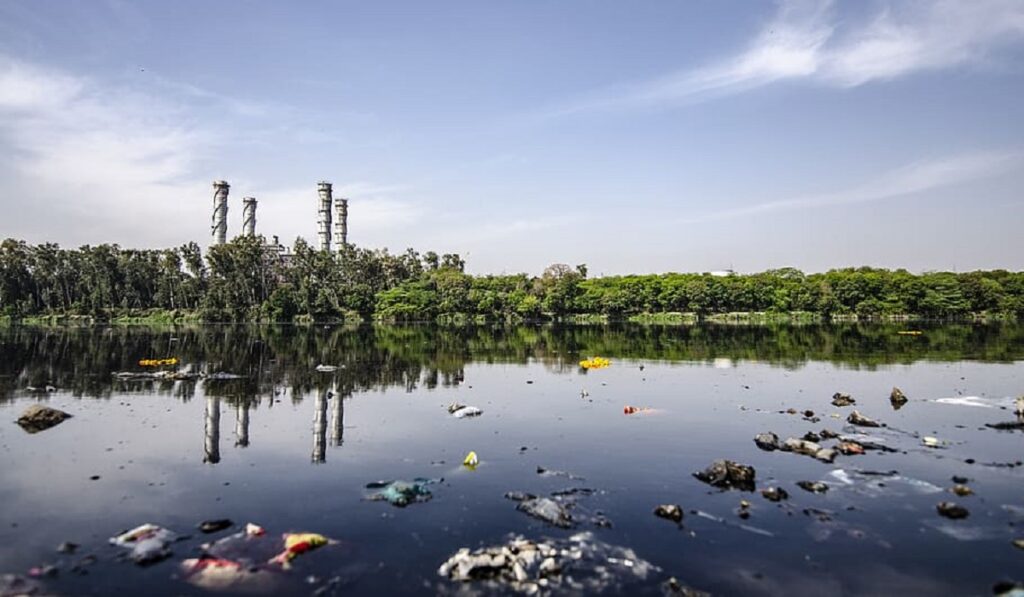
Unsafe water is the main cause of death across the world, and the US has some of the worst water sources due to pollution. (NRDC)
The rivers and streams in the US dissolve and carry toxic chemicals and harmful substances, which is why half of these are unfit for human consumption or recreation. Lakes are not above being polluted, with a third of all lakes water in the US being unsafe for human consumption.
The agricultural sector is a major contributor to water pollution in the US, with toxic chemicals washing from fields and factory farms contaminating the natural waterways in the US. Nonpoint source pollution is also a big concern, which occurs as a result of runoff.
The US Generates 220 Million Tires, 30 Billion Foam Cups, and 1.8 Billion Disposable Diapers Annually
The US is a leading waste producer, with 220 million tires, 30 billion foam cups, and 1.8 billion disposable diapers blocking up landfills. The most wasted material is paper at 26% of all waste produced, food and organic material making up 15%, while plastics add 13% to all waste produced.
It Is Estimated That 1.2 Trillion Gallons of Untreated Sewage, Industrial Waste, and Stormwater Enter the US Waters Annually
Most of the 1.2 trillion gallons of untreated wastewater from factories and farms will become waste that will block waterways, causing flooding when there are severe storms and killing all wildlife in their way. (Water Way)
Untreated sewage contributes to the spread of disease, with people swimming in contaminated rivers and lakes.
Gone are the days of happily relaxing next to and in a river on a hot summer’s day.
Almost 3 Million Children Under the Age of 5 Die Annually Due to Environmental Issues
Young children aged 0-5 years often experience health challenges due to pollution, making up 40% of the population that suffers from environmental factors that cause health problems, such as congestion and lung disease due to air pollution. (PRB)
Children are more vulnerable as they are small and suffer more from even limited exposure to pollutants such as methane, carbon dioxide, and sulfur dioxide. By crawling and tasting everything, your rug rat will easily face contamination as they ingest harmful substances.
According to the Latest Report by the World Bank, the Economic Cost of Air Pollution Is Around $8.1 Trillion
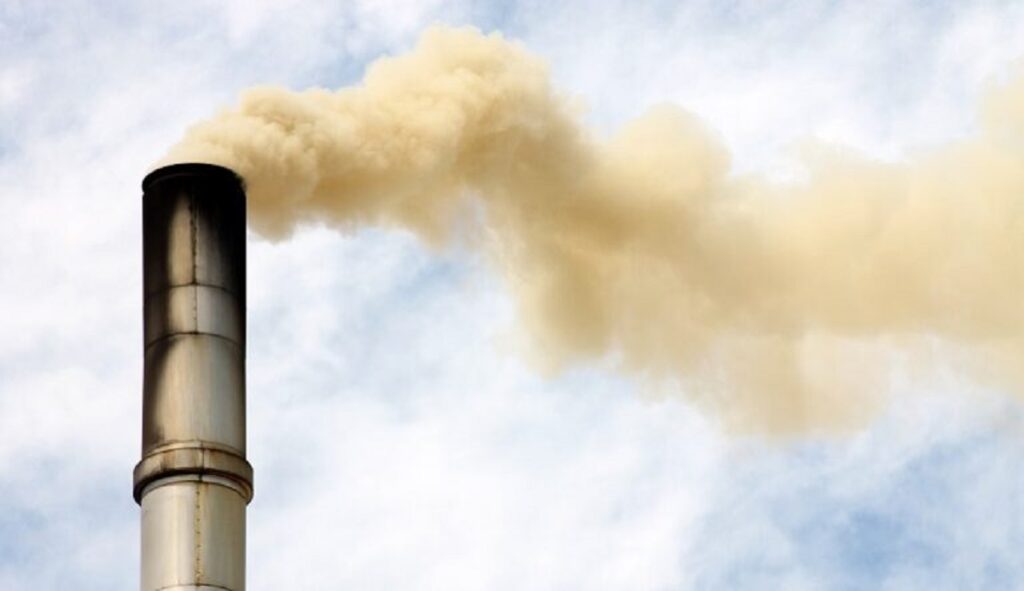
Low and middle-income countries make up more than 95% of the world’s pollution-caused deaths.
Air pollution cost about $8.1 trillion in 2019, which is equal to 6.1% of the world’s GDP—meaning some of your country’s income is spent on eliminating harmful gas (#DisappearingPuffOfSmoke).
Among the Top 15 Polluted Cities Worldwide, 10 Are in India
India has the dubious pleasure of 10 of the world’s most polluted cities being located there. (Earth)
The World Health Organization identified 10 of the most polluted cities in the world in India, with Bhiwadi being the most polluted at 106.2 AQI.
It Is Believed That The Leading Cause Behind Species Extinction, Water Pollution, Habitat Destruction, and Ocean Dead Zones Is Animal Agriculture

Animal agriculture is when animals are farmed for human consumption, which also produces a large amount of harmful chemicals like nitrates and carbon dioxide, as well as causes the pollution that comes from cleaning factory farms and intensive agricultural projects.
The Environmental Protection Agency (EPA) states that all of these chemicals and pollutants get flushed into local waterways and eventually end up in the sea, contaminating the marine environment.
Types of Pollution
There are several different kinds of pollution that affect humans in negative ways around the world. From air pollution to water pollution and land pollution, there are many ways in which we destroy our natural environment.
Air Pollution Facts

Air pollution is one of the most damaging and potentially toxic public health pollutants, as it kills the most people annually. The bad or toxic quality of air that people breathe causes respiratory illnesses.
Air pollution takes a heavy toll on the lives of numerous animals and birds. A considerable number of animals and birds die due to breathing these toxic gases.
Annually, 6.7 Million Premature Deaths Worldwide Occur Because of the Combined Effect of Ambient and Household Air Pollution, a Report by the WHO
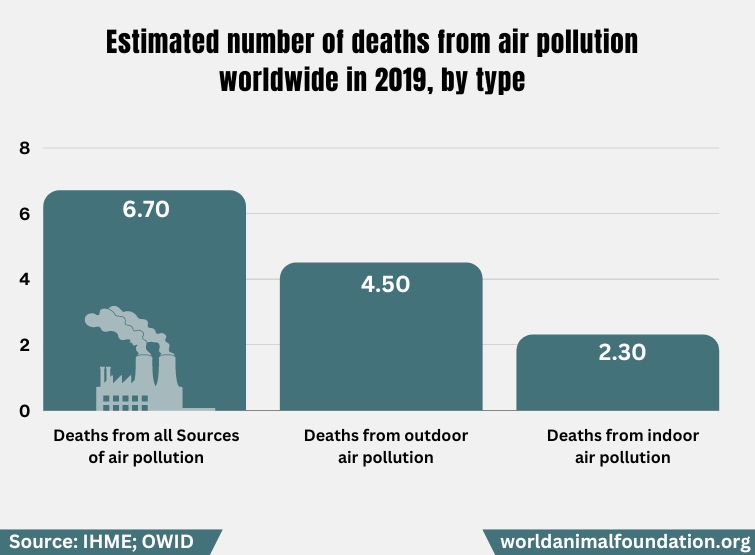
If we cut down on air pollution, the World Health Organization found that we would be able to cut back on 6.7 million premature deaths annually by preventing stroke, heart attacks, and lung disease.
Almost 99% of the World’s Population Is Breathing In Polluted Air
With almost 10,000 cities across the world, the World Health Organization reports that 99% of the world population lives in cities that have below-standard air quality that compromises human health. (WHO)
The volatile organic compounds rating for the air quality is questionable in these cities.
Are you living in a city with a good WHO air quality score? (#ProbablyNot)
According to a Study, More Than 2 Million People Die Annually Due to Air Pollution
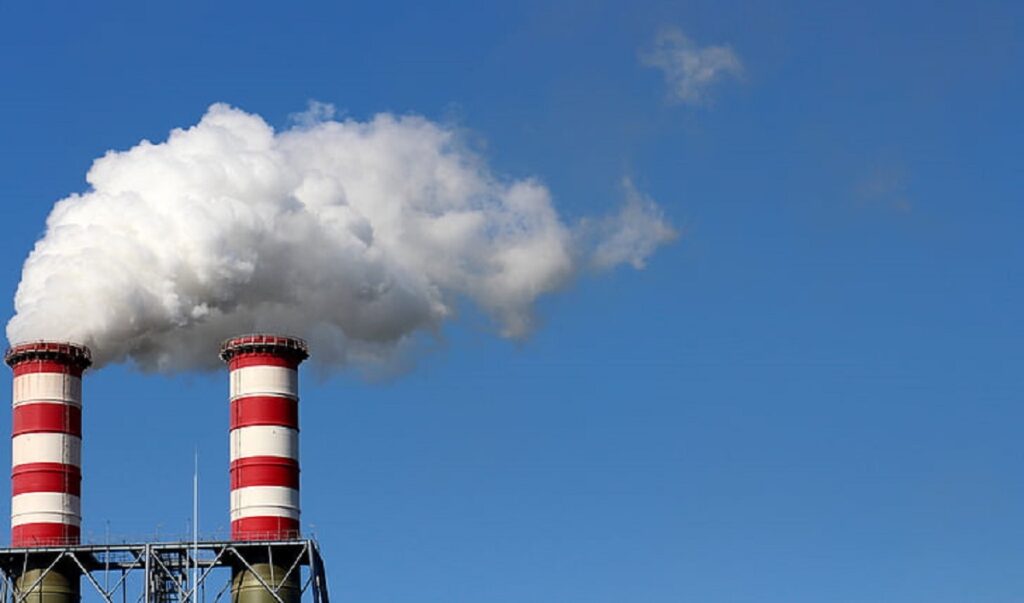
The Guardian reported that more than 2 million deaths happened due to the air people breathe. Vehicle exhaust and the volatile reactions caused by exhaust fumes interacting with oxygen result in a severe loss of life.
Almost 88% of the Children Living Near E-Waste Sites in Guiyu, China, Suffer From Different Respiratory Diseases
Waste sites produce large amounts of toxic fumes, such as the e-waste site at Guiyu, China, that produces toxic fumes.
Guiyu is the largest e-waste recycling site, where lead poisoning, carbon monoxide, and carbon dioxide gasses create diseases that cause massive deaths, illness, and birth defects.
In 2019, More Than 36,600 People Died in Mexico Due to Air Pollution
Mexico has lost almost 40,000 people due to air pollution in 2019. Outdoor air pollution and indoor pollution from cooking on open fires are the main contributors. (State of Global Air)
Air Pollution Is Responsible for 23% of All Deaths From COPD
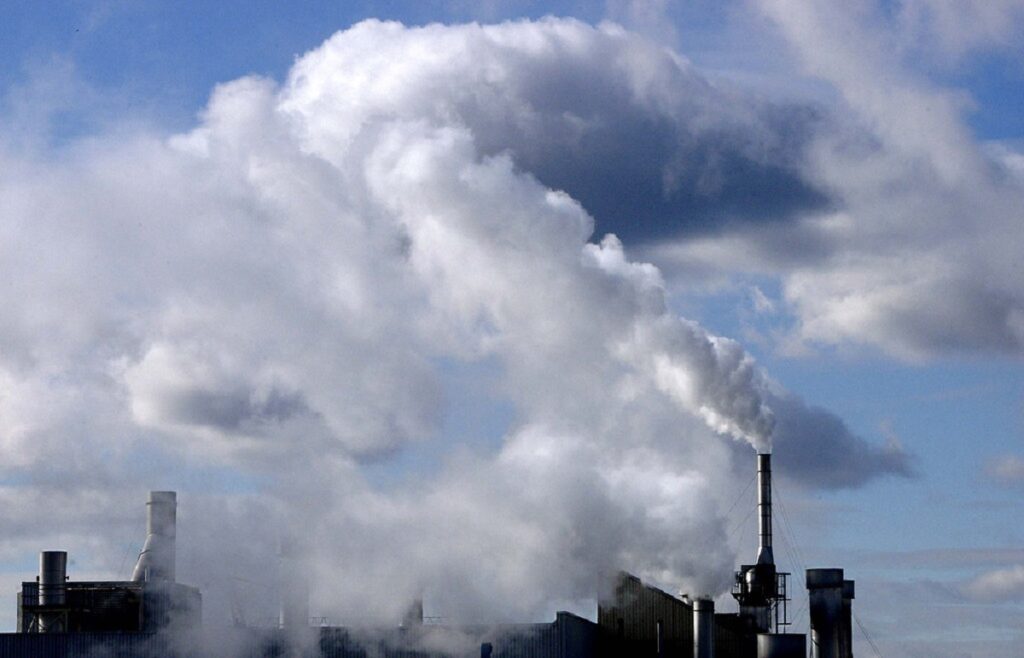
COPD is a lung condition that causes asthma-like congestion of the lungs, and 23% of deaths from COPD are due to household air pollution in low and middle-income countries, according to WHO.
Because of Air Pollution, the Average Life Expectancy Has Decreased by 2.2 Years
Particulate air pollution influences life expectancy, reducing the average lifespan by 2.2 years, or a combined 17 billion life years are lost, according to the WHO standard of air pollutants. (UChicago)
Land Pollution Facts
Landfills are overflowing, and it’s becoming hard to enjoy nature without being faced by our human and messy side. People still think it’s okay to ask, “What is littering?” when we live in a world that we’re quickly killing.
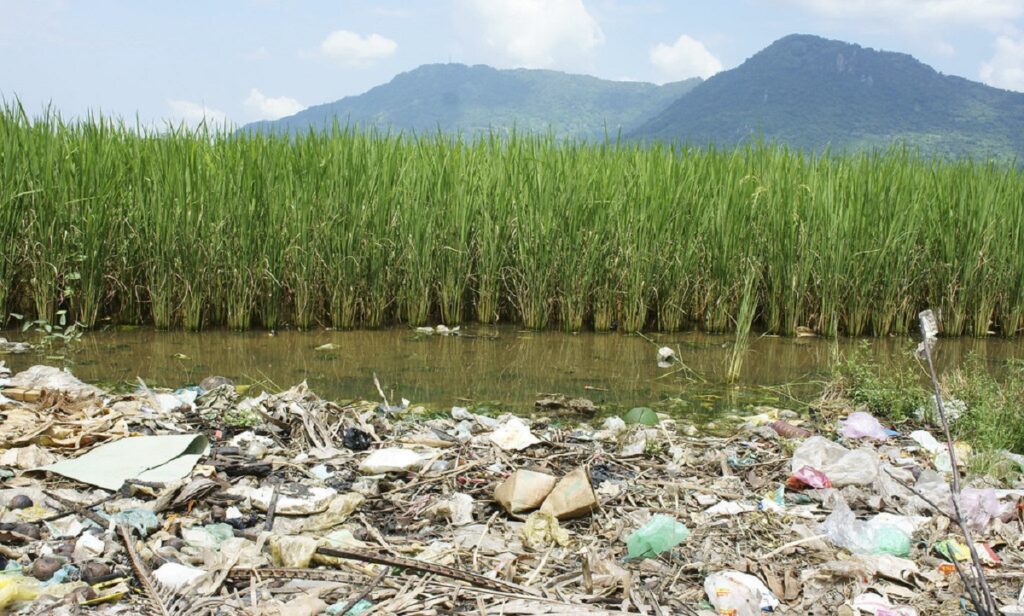
According to the Latest Report in the US, From a Total of 292.4 Million Tons of Solid Waste, Almost 146.1 Million Tons Were Gathered in Landfills in 2018
Solid waste in the US, also known as MSW (municipal solid waste), amounted to 4.9 pounds per person each day, which totals 292.4 million tons per year.
Of the MSW, only 69 million tons was recycled, with 25 million solid wastes being composted. Yet, 146.1 million tons ended up in landfills, where pollution spreads from.
According to EPA, Almost 4.4 Pounds of Garbage Is Produced by a US Citizen Every Single Day
In 2013, the waste produced by each US citizen amounted to 4.4 pounds per day, but this increased to 4.9 pounds in 2018.
We continue to increase the amount of MSW produced by not owning up to our own wastes, such as aerosol cans, disposable and non-disposable goods, cyber trash, and more.
According to EPA, the Largest Amount of Garbage Generated Was the Organic Material in the Form of Food
2018 saw almost 150 million tons of MSW produced in the US (EPA), of which:
Food: 24%
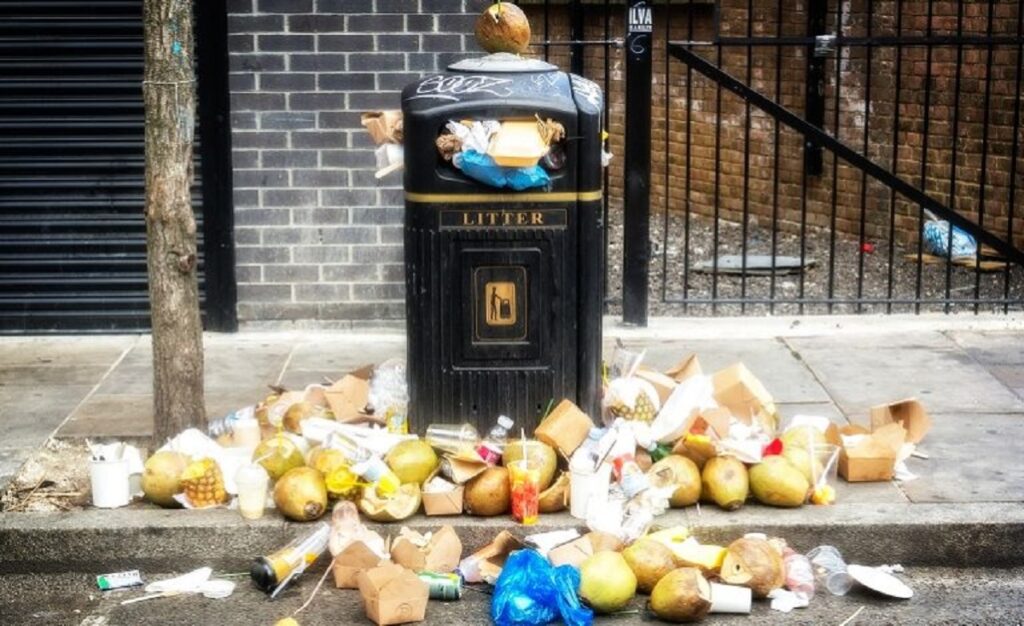
Food waste made up 24% in organic mass. And wasting food is actually a sin, considering the state of world hunger, don’t you think?
Plastic: 19%
Plastic waste material accounted for 35.7 million tons of solid waste, which doesn’t decompose. This is an increase of 4.3 million tons from 2010 to 2018. You can guess the main culprits are containers and packaging materials.
Paper and paperboard: 12%
Landfills are filled with paper and cardboard materials to the tune of 67.4 million tons in 2018. However, thanks to society becoming less reliant on paper with the digitization of news and information, this is a decline of 20.3 million tons from 2000.
Rubber, leather, and textile: 11%
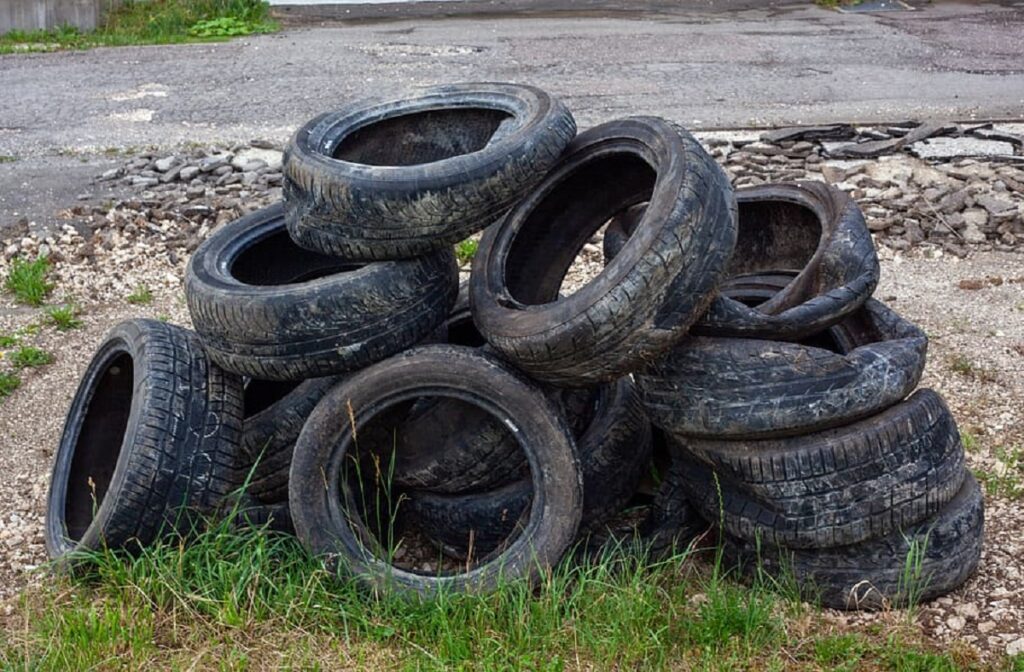
Leather, while not as widely found as a pollutant, continues to add to the pollution statistics due to the harmful tannery processes that often pollute water sources.
Even the textile industry has a larger pollution footprint due to the harmful chemicals used in bleaching paper. Rubber factories produce large volumes of air pollutants.
Metal: 9.5%
While metal recycling is 9.5%, many metal products still end up in landfills, including harmful lead-acid batteries, which account for a shocking 2.9 million tons.
Wood: 8.3%
Packaging using wood, such as crates and pallets, makes up 3.1 million tons of organic waste materials.
Glass: 5.2%
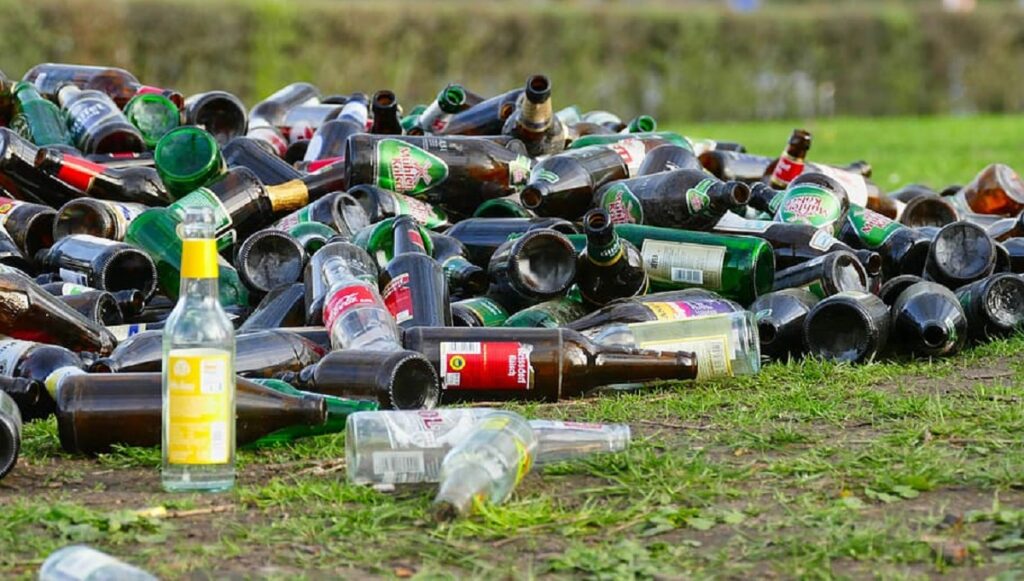
Bottles, containers, and other glass products totaled 3 million tons.
Miscellaneous items: 2.2%
The odds and sods that we all send off to the dump totaled 2.2%, which includes over a million tons of recycled cyber trash.
Water Pollution Facts
As the old saying goes: water, water, and not a drop to drink—our freshwater resources, as well as marine resources, are being steadily poisoned by our own filth, trash, and waste.
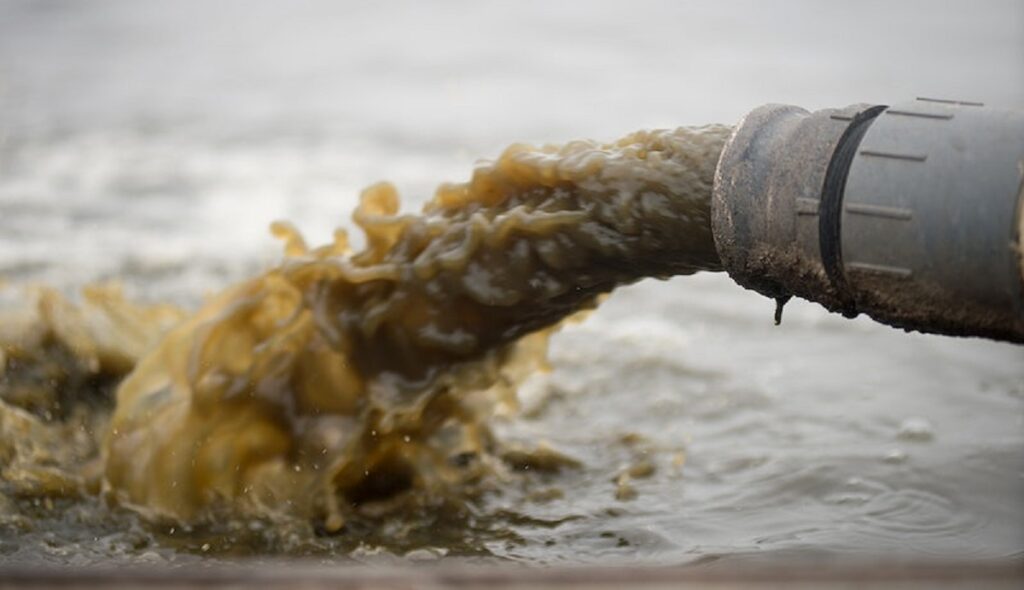
Almost 80% of the Marine Pollution Is Attributed to Runoffs From Land
Agriculture produces much of the runoff waste that ends up in rivers and streams and finally poisons the sea. (Ocean Service)
Fertilizers and chemical pesticides are huge factors, but runoff from factories, towns, and cities also contributes massively to the deaths of ocean life.
It Is Estimated by the EPA That 64% of the Lakes, 44% of the Stream Miles, and 30% of the Bay Are Not Fit for Fishing and Swimming
While only 30% of US water was assessed, mercury, organic pollutants, and dissolved chemicals were found in 64% of all the tested lakes, 44% of the streams, and 30% of bay areas were no longer fit for a swim or to fish from.
According to WHO, 2.2 Billion People Are Deprived of Clean Water, and Almost 4.2 Billion People Have No Access to Safely Managed Sanitation Services
Access to clean water and appropriate hygiene remains a challenge, as 2.2 billion people don’t have clean and potable water. (WHO)
Contamination affects the use of hygienic toilets, and sanitation services are severely affected by pollution.
According to WHO, It Is Estimated 829,000 People Die Every Year Due to Diarrhea Owing to Unsafe Drinking Water, Sanitation, and Hand Hygiene
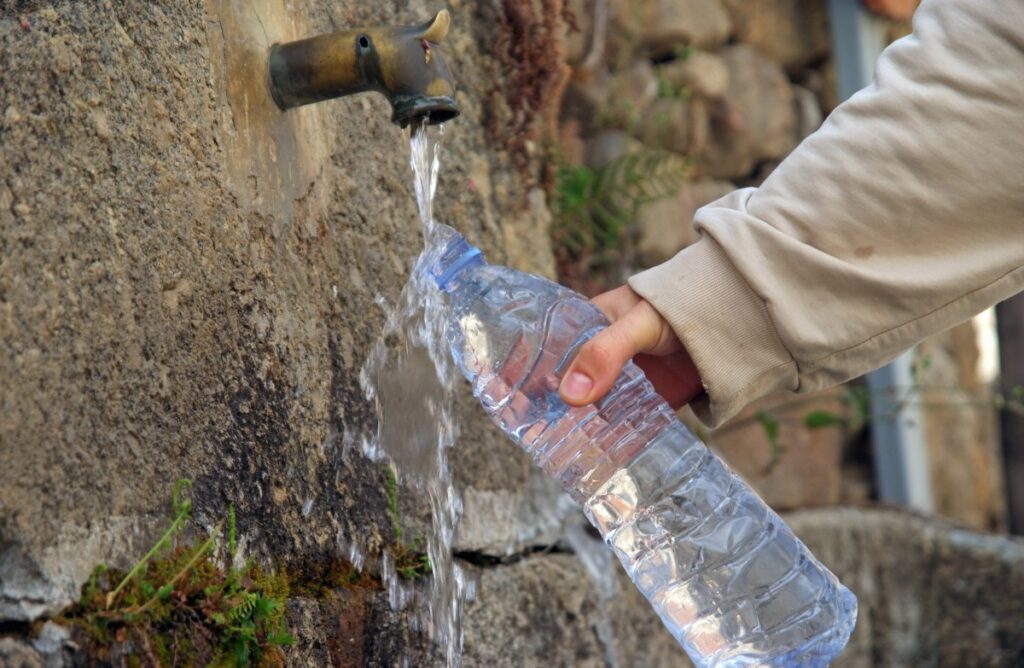
As a child, you are probably taught not to drink from unsafe drinking water; however, diarrhea continues to cause serious illness, and even basic task like washing your hands is a challenge due to marine plastic pollution, which makes water unsafe to use.
By drinking from contaminated water sources, many people have died from diarrhea.
Almost 14 Billion Pounds of Garbage Is Disposed of in Oceans Annually
The tide carries away almost 14 billion pounds of trash that ends up in the oceans. (NPS)
Some trash will sink, while other bits will dissolve or get eaten by animals like dear old Jaws biting into that hamburger you never finished. However, most of the trash will continue to float on the tide, trapping marine life, such as sea turtles that try to eat plastic bags, thinking it to be yummy jellyfish.
Noise Pollution Facts
The world is a loud place, but just how loud and what effect this has on us is surprising, to say the least.

The Most Neglected Type of Pollution Is Noise Pollution, a Sound That Reaches 85 Decibels Is Referred To As ‘Noise’
You may not see noise pollution as a problem, but the noise that affects human health and the safety and health of the rest of the world can have a serious impact on people, animals, and even the physical environment.
Any sound that’s louder than 85 decibels is harmful, and when sustained, such noise will negatively affect hearing.
Study Shows High Blood Pressure, Stress-Related Illnesses, and Hearing Loss, etc. Are Attributed to Noise Pollution
Ever been honked at by a car? If a loud noise suddenly sounds near you, it can negatively affect your blood pressure, immunity, and hearing, causing potentially fatal results such as hypertension, stroke, and hearing loss. The short of it is that loud noise can kill.
Hundreds of Thousands of Deaths Are Attributed to Noise Pollution by Increasing Coronary Heart Disease Rate
Being stuck in traffic is stressful, and constant exposure to noise from cars, trains, and airplanes can cause an increase in the risk of a heart attack as coronary function is negatively affected. (NCBI)
Even your blood pressure increases due to the constant noise of the traffic outside (especially if you live near a busy road).
The Navigation System of Whales Has Immensely Been Disturbed Because of Underwater Noise Pollution
Underwater noise pollution, such as from shelling and fracking, has been proven to kill marine wildlife, even leading to the disorientation of whales and dolphins that are unable to navigate—often beaching themselves and facing death. (NHM)
Light Pollution Facts
Even light can lead to pollution—and I don’t mean the used light bulbs that end up in landfills. Light pollution also includes the use of natural resources to generate lighting. Each time you flick a switch, you are burning fossil fuels to generate electricity.

Approximately One-Fourth of the Energy Consumption Is Due to Lighting
While I like a brightly lit home, this costs the planet a lot in terms of energy production, so I opt for a low carbon footprint light as energy consumption for lighting is as high as 26% of the world’s residential energy bill. (LeHigh)
Research Results Show Almost 2 Million Barrels of Oils per Day Are Wasted on Over Illumination
Excessive lighting requires more oil for electricity conversion, which amounts to almost 2 million oil barrels burned unnecessarily each day. (IJSR)
Business and human consumption amount to 4-5 million barrels of oil per day in the US alone.
By cutting back on lighting, we can reduce oil consumption by half.
According to a Study, by Destroying Nitrate Radicals (Which Helps in Smog Scattering), Light Pollution Could Make the Smog Even Worse
Too much light production causes the destruction of nitrate radicals, which means that there is more smog buildup in the atmosphere. (Science Direct)
Artificial Light Could Disturb the Plants’ Flowering and Developmental Patterns
Plants follow a specific cycle of light but also rely on pollinators that may be fully nocturnal. With too much light at night, the pollinators won’t help pollinate these plant species.
So, while my cactus trees look stunning with an up lighter in the garden, this negatively affects their growth and reproduction cycle.
Pollution Statistics
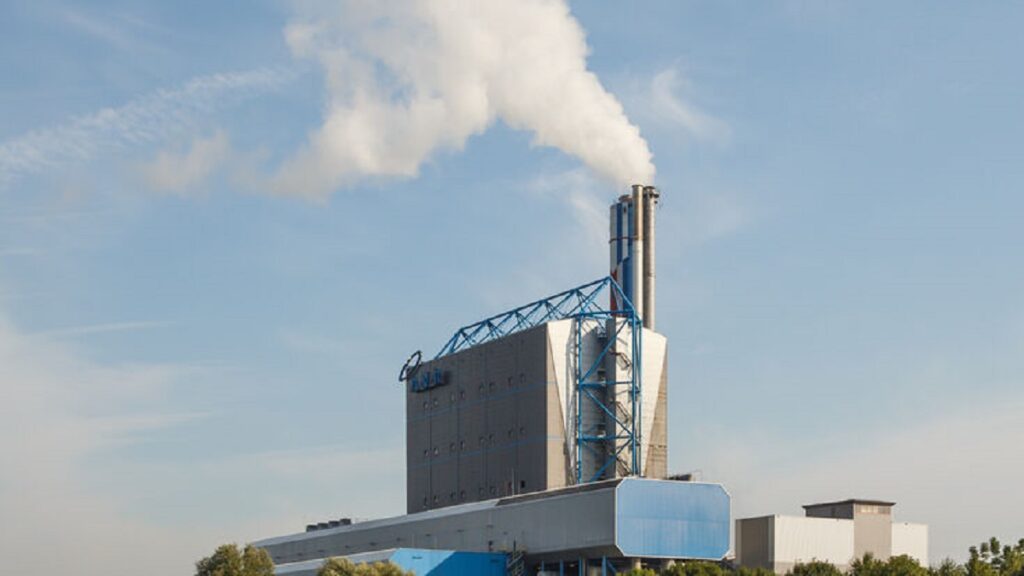
There are a few even more disturbing pollution statistics to be aware of.
The World’s Largest Producer of Carbon Dioxide Is China
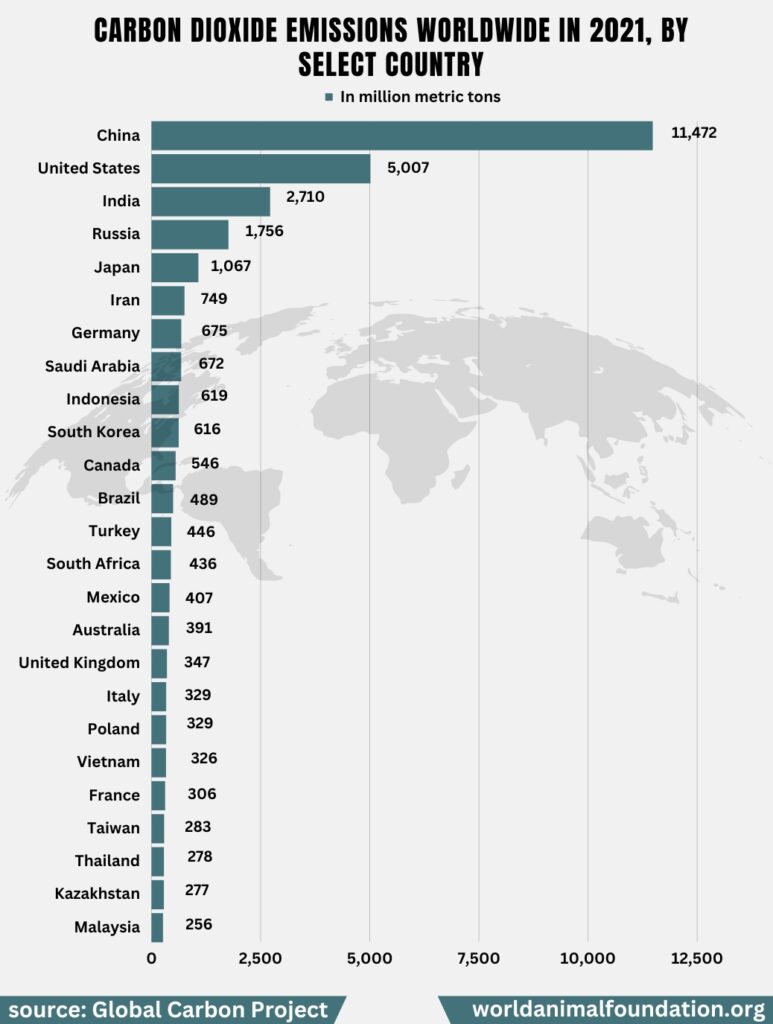
China is the biggest culprit, with metric tons of carbon dioxide production. (Investopedia)
The US is close behind with the second-highest carbon dioxide emissions, with India, Russia, and Japan making up the top five.
In India, Around 80% of the Urban Waste Is Dumped in River Ganges
The Ganges is the most important river in India and one of the biggest in the world, and it has a valuable role to play in the Indian economy; however, most of the cities and towns that line the banks of this major waterway dump their garbage, sewage, municipal wastes, and industrial waste into the murky waters. (Aqua Find)
Only 20% of urban waste is recycled or correctly disposed of.
More Than 100 Pesticides in Air, Water, or Soil Can Cause Congenital Defects, Including Gene Mutations and Cancer
While I don’t like bugs any more than the next person, the pesticides and insecticides used in the world make up a massive 3 billion tons worth of environmental impact per annum.
According to research, these pesticides can cause serious human health issues such as poisoning and chronic conditions like gene mutations and cancers.
There Exists a Huge Mass of Floating Debris in Japan After the Tsunami of 2011, Which Includes Cars, Dead Bodies, Radioactive Material, and Plastic
Japan may be the land of the rising sun, but it’s also the birthplace of a massive debris-floating island that formed after the destructive 2011 tsunami. (Facts and Details)
It’s estimated that 4.8 million tons of waste ended up in the ocean. Of this total, 70% is made up of vehicles, containers, and the byproducts of human activity. This hazardous floating mass also contains houses, bodies, and more.
18% of Greenhouse Gas Emission Is Attributed to Animal Agriculture
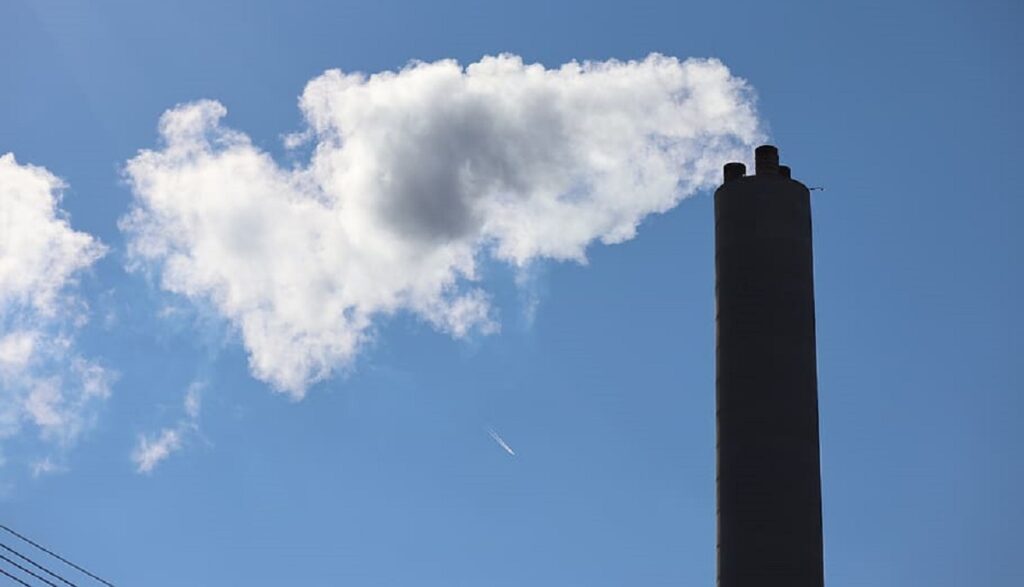
Factory farming and the mass production of livestock animals contribute to 18% of all greenhouse emissions from sources such as belching and animal waste. (academic)
So, while you may like your steak, the cow that it’s made from has severely contributed to the overall high levels of greenhouse gas emissions, causing the greenhouse effect.
Every Year, 32,000 Million Tons of CO2 Production Is Attributed to Livestock and Its Byproducts
Getting animals to slaughter facilities and from factory farms produces high levels of CO2. Even the fertilizers used to grow animal feeds and the fuel consumed to process that feed add to the total figure of 32,000 million tons of CO2 pollution.
A Recent Study Has Revealed Air Pollution Is the Major Contributor to COVID
The world sat in horror as COVID claimed millions of lives, but the massive death toll could potentially have been less if air pollution had been better managed. (Frontiers)
Global air pollutants have also been shown to influence the transmission of COVID-19 pathogens and worsen physiological conditions.
What Measures Can Stop Pollution
There are a few ways in which pollution can be curbed and reduced. It’s up to you and me to ensure that pollution statistics start showing a reduction. Here are a few measures to reduce pollution:
- Use public transportation to reduce fuel emissions
- Turn off lights and use electricity-efficient lights
- Use solar power for lights and different equipment
- Actively recycling your municipal wastes by composting organic materials and reusing where you can will help reduce pollution
- Discourage people from littering, control outside fires, and smoke safely so as not to start fires
- Ban animal deforestation that leaves millions of animals at risk of extinction
FAQs
What Is Pollution?
Pollution is when a substance that is toxic or harmful is introduced into an environment, harming that environment. From large pollution, such as the waste in landfills, to tiny particles floating in the air and water, pollution is what damages our planet.
Which Kind of Pollution Is Illustrated by a Pipe?
A pipe can carry sewage and wastewater that can lead to water pollution. Pipes can also rust and release chemical pollution into the environment.
How Much Pollution Is in the World?
The world suffers severely from air pollutants, and it costs an average of 6.1% of the world’s GDP to manage pollution. The coal impact on the environment has severely damaged water and air sources.
How Long Has Pollution Been a Problem?
Pollution has a long history, reaching back as far as 2,400 years ago, but international action to manage and reduce pollution only dates back to 1972.
What Pollutes the Air the Most?
Particulate matter, CO2, ozone, nitrogen dioxide, and sulfur dioxide are some of the most lethal air pollutants. Burning fossil fuels contributes the most to the spread of these harmful pollutants and high concentrations of greenhouse gases that cause global warming and, ultimately, climate change.
Indoor air pollution contributes in the form of gas production and byproducts from cooking—which is sometimes known as ambient air pollution.
What Causes the Most Pollution?
If carelessness could be a cause, that would be it, but air pollution from different sources of gas emissions is most responsible for the world’s pollution.
Burning fossil fuels, agriculture, mining, industrial waste and emissions, landfill waste, and consumer waste production of municipal solid wastes are the main contributing factors.
Wrap Up
If we don’t start pulling up our environmental socks, we will soon be a blip on the radar of evolution as future generations may learn what causes extinction when they discover the horror of the “modern age’s” pollution.
It’s time to save animals’ lives!
Aquatic animals, land animals, birds, and more are all at risk. We are at risk as cardiovascular disease increases due to air pollution and our own stupidity. When will we learn, and how are you helping to stop pollution?


